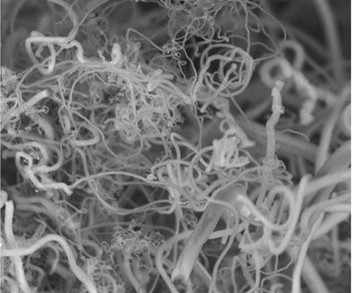Many researchers have attempted to find a use for the increasing level of carbon dioxide (CO2) in the atmosphere in order to reduce the temperatures associated with climate change and to make money. No method has proven to be economically viable. Dr. Stuart Licht and his research team at George Washington University are the first to produce a method of making carbon nanofibers from atmospheric CO2.
Carbon nanofibers are relatively expensive using present manufacturing methods but the strength and utility of the materials has produced an increasing market. The new method can make a ton of carbon nanofibers for about $1,000. The new technology is economically competitive with the best methods of making carbon nanofibers.
Licht claims that a large enough plant using his solar thermal electrochemical process could reduce carbon dioxide content in the Earth’s atmosphere to levels that existed before the industrial revolution began. The reduction would take about ten years. The process consumes all of the CO2 made from the electricity needed to run the process.
The device is a modified version of an electrolytic cell. CO2 is dissolved in a solution of molten carbonates at 1,380 degrees Fahrenheit. The carbon nanofibers are deposited on the steel electrode. The only working model is a lab scaled device that has a through put rate that is high enough to justify commercialization. This is the only method for reducing carbon dioxide in the atmosphere that has been proven to work in physical and economic terms.















